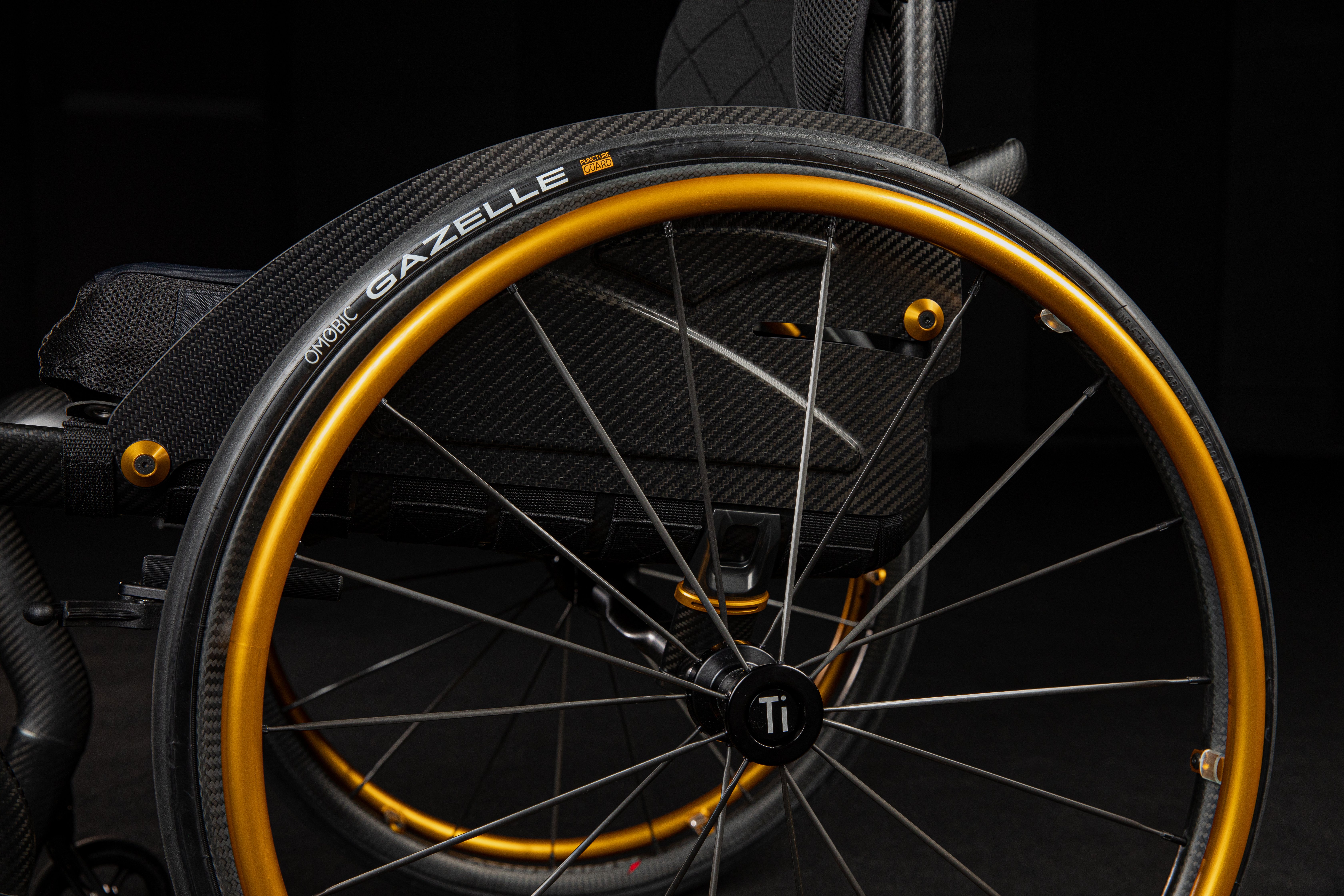If you’ve been using an aluminum-framed wheelchair for a while, you may be considering an upgrade to a titanium or carbon fiber frame. These materials offer several advantages that can enhance your mobility, reduce strain on your body, and improve your overall quality of life. Here’s why making the switch could be the best decision for you.
Why Upgrade to Titanium or Carbon Fiber?
Top 3 reasons to consider a change!
1. Lighter Weight for Easier Propulsion
Titanium and carbon fiber are significantly lighter than aluminum, making your wheelchair easier to push and maneuver. This reduces fatigue and strain on your shoulders and arms, helping to prevent overuse injuries in the long run. This is a long-term investment in your mobility! While the upfront cost may be higher, titanium and carbon fiber frames last longer than aluminum. They resist corrosion, withstand greater impacts, and maintain their performance for years, making them a wise investment in your independence and mobility.
2. Stronger and More Durable
.jpg?width=408&height=272&name=TiLite%20ZR%20AaronBaker5%20(1).jpg)
While aluminum is durable, titanium and carbon fiber are even stronger and more resilient. These materials are designed to withstand heavy daily use while maintaining their structural integrity over time. With a smoother ride, long periods of mobility are more enjoyable and less taxing on your body.
3. Sleek and Modern Design

Both titanium and carbon fiber offer a sleek, high-performance look that reflects their advanced engineering. These materials allow for customizations that fit both your functional needs and personal style.
What If Insurance Won’t Cover It? Funding Options to Explore

While titanium and carbon fiber wheelchairs offer clear benefits, some insurance providers may not cover them fully. If you encounter coverage limitations, here are some potential funding sources to consider:
- Nonprofit Organizations – Groups like the Kelly Brush Foundation, Triumph Foundation, and the Christopher & Dana Reeve Foundation offer grants to help individuals afford advanced mobility equipment.
- State and Local Disability Programs – Some states have funding assistance programs or vocational rehabilitation services that help cover the costs of necessary equipment.
- Crowdfunding & Community Support – Platforms like GoFundMe allow individuals to raise funds from their community to help with the cost of a new wheelchair.
- Manufacturer Assistance Programs – Some wheelchair manufacturers or suppliers offer financing plans or discounts to make these upgrades more accessible.
Share Your Experience
Have you tried getting titanium or carbon fiber covered by insurance? We’d love to hear about your experience—whether successful or denied. Your story can help advocate for better access to these essential upgrades!

Commercial Product Manager - Permobil Americas
Nicole B. LaBerge, PT, ATP is a Physical Therapist with 18 years of experience in a variety of clinical settings. She currently works for Permobil as a Commercial Product Manager for Manual Wheelchairs & Power Assist Devices. Her past clinical practice has included seating and mobility for adult and pediatric populations, with a focus in neurological rehabilitation, power standing and wound care. Nicole has presented at the State and International Levels, has multiple publications in peer reviewed journals and enjoys sharing her passion for patient advocacy, efficiency, and clinical outcomes. She served as an Executive Board Member for the Clinician Task Force for 3 years and is currently an active member in the CTF.

